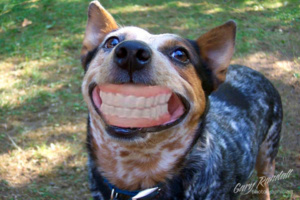“Is that photoshopped?” I hear that question every now and then, mostly on Social Media, although not as much as I used to ten years ago. I suspect that it could be that digital photography has become accepted more, and with websites such as Instagram that allow the user to alter their photos with a touch of a thumb, most of the time in an attempt to emulate a bad film photo, people are more accepting of photos with an artistic twist.
Photoshop is a photo editing program but the word is now used as a transitive verb usually in past tense to describe an altered photo. An altered photo is a very broad description for a process that can easily go from simply resizing a photo to altering a photo into representing something that wasn’t there. There are those who find no fault at all in the photographer editing their own photos, and there are those who say that one dare not touch their photo lest it become fake.
In reality even back when we sent our photos to the drug store they were altered in some way through the process, usually in an attempt to auto correct by the technician or because of the quality of the maintenance or calibration of the machine used to develop the film and even the type of film that we used.
As a photographer who learned how to shoot using a 35mm camera, a Yashica Electro 35 to be precise, and learned how to develop my own black and white photos I have my own take on the whole, sometimes controversial, subject.

Back when I started out as a hobbyist in 1977 I wanted to learn how to develop my own film in a darkroom. I joined a camera club and learned from the “old guys” there. One thing that I did learn is that it’s not just a simple process of developing, rinsing, fixing and drying. There’s also more to enlarging and making a print than what I suspected. What I learned the most is how much one can alter the look of the photo either by accident or on purpose in the darkroom. This is not to mention how one can alter a photo while they are making the image in the camera using the basic adjustments.
While in the darkroom one is able to push or pull the process which involves leaving it in the developing solution for a longer or shorter period of time, as well as dodging and burning areas independently of other areas. This was a favorite process of Ansel Adams and how he was able to put into practice his Zone System. Masking can be done with cut outs made of cardboard during the printing/enlarging process. Pieces of other photos can be combined, other details removed. One can be creative in the darkroom and most don’t realize that this was done regularly.
The composites that I mentioned that were made in the darkroom are still done today, and are the likely source of the use of the word photoshopped as a verb. These include images that include components that were not a part of the scene at the time such as huge moons, false skies or a person in a scene that they weren’t a part of. Some do it not to deceive but to create art. It’s done as an artistic method and the image or the artist usually make it known. But as with all good things in all good things there will always be those who abuse it. If it’s not real say so.
I say that in a judgmental way and I’m not afraid to say that. Any kind of deception isn’t good. In the world of photography it makes those who would otherwise enjoy genuine hard earned and skillfully made photos question the photo’s authenticity. It also makes beginners hesitate to enjoy the freedom that they have today in digital photography to be able to develop their own photos without chemicals or a dark room.
In digital there’s no such thing as not adjusted, or as some call it, “SOOC”, straight out of camera. It’s a myth that the image is a pure image. You have presets that are programmed onto the camera when it’s manufactured, usually Landscape, Portrait or Vivid, Neutral or even Black and White. All of these are processes that develop your photo in the camera. An engineer is, essentially, processing your photos for you, so why not do it yourself?
All of this considered, today we have the ability to do the same processes with our computers with the lights on. In my work my processing workflow follows closely the processes that are used in a darkroom. Exposure, contrast, color correct, dodge, burn etc. Even the one “special effect” that I use was made for film photography, the Orton effect.
I urge anyone who has ever wanted to learn to become a photographer and develop their own photos to not let digital stop them. I also tell them to not let the judgement of others affect what they do in either life or photography. Don’t let the question, “Is that photoshopped?” stop you from being creative with your photography. And the best part is that, due to the introduction of Lightroom you can say no it’s not, that is until lightroomed becomes a verb.

